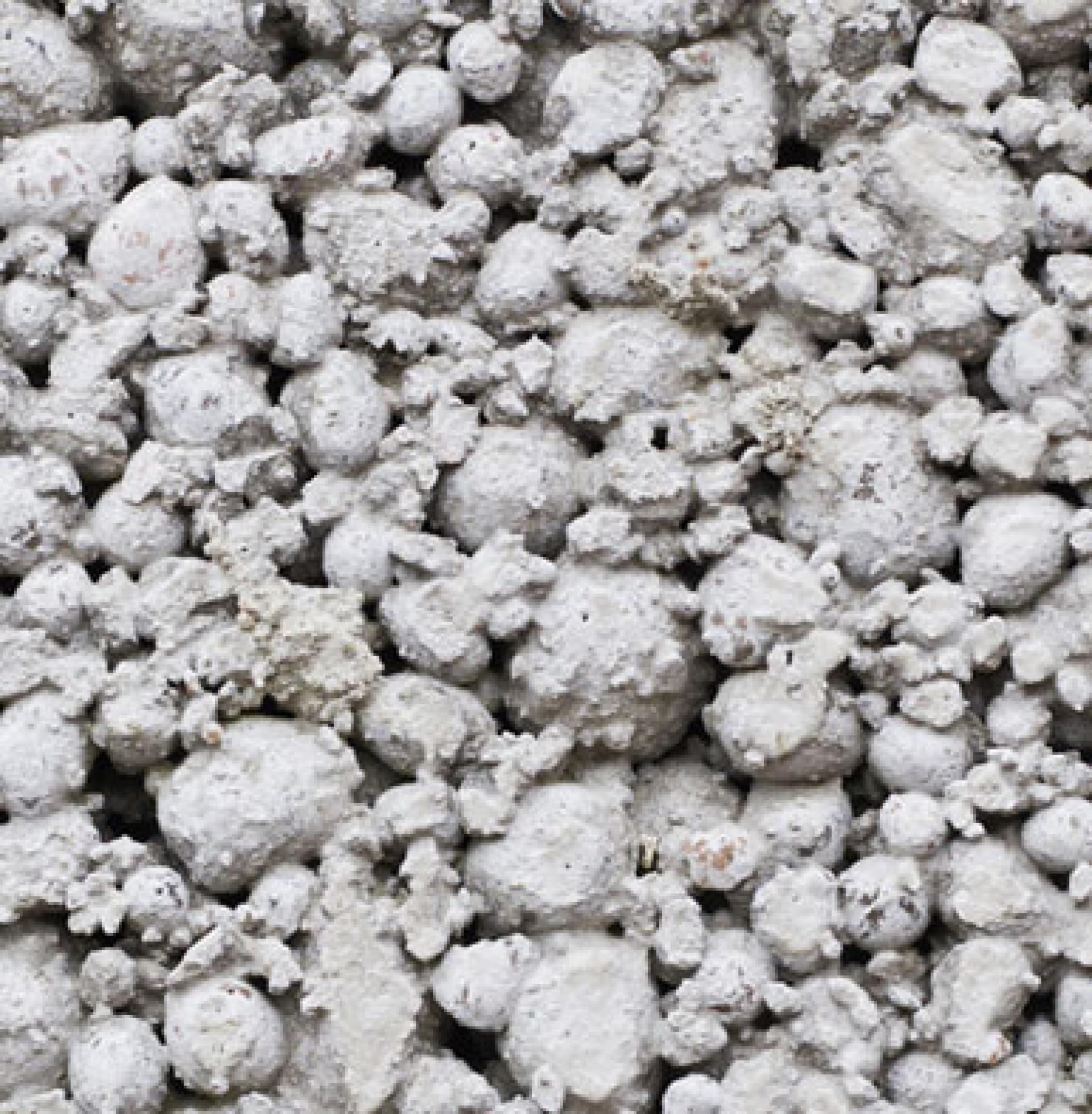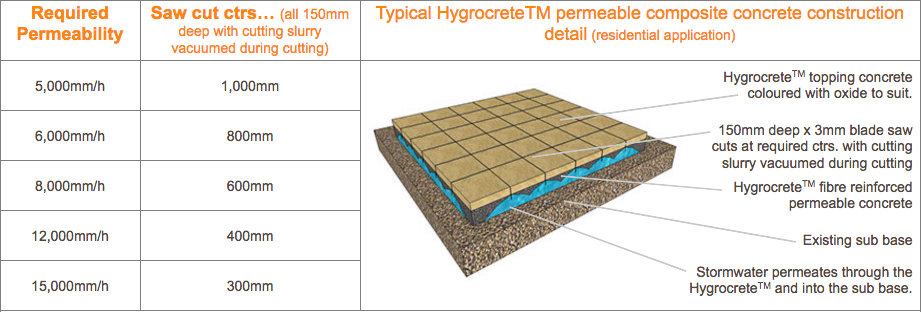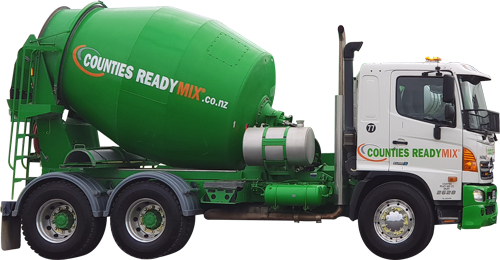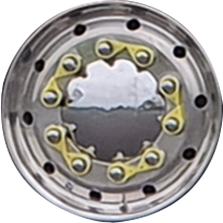HygrocreteTM (Pervious Concrete)
What is Permeable Concrete
Also known as Pervious Concrete
Permeable (also knows as pervious) concrete is able to allow water to pass directly through from the top surface to the bottom. This type of construction allows surface water to penetrate the subgrade and in some cases eliminated the need for storm water drainage requirements. Permeable concrete has been around since the 1800’s in various forms but recent high density housing has lead to a resurgence in demand.
This environmentally sympathetic construction can allow rigid pavement for patio’s and car parking without adding to the sites non permeable area. Permeable concrete can greatly reduce private and public stormwater infrastructure requirements and costs. Permeable concrete also restores ground moisture levels to sustain vegetation growth and health in built up areas.

The Downsides
What you should know!
There are some downsides to Permeable concrete unfortunately. Some aggregate will loosen from the concrete's surface (called ravelling) and it can be a little uneven in texture and appearance. It can become easily clogged with fine material such as soil and vegetation. It also has a different methodology for placement so your concrete placers need to be aware of what's required before concrete placement (traditional concrete is poured, screeded, floated, troweled and water cured, permeable concrete is poured, struck to height, roller compacted and covered). If Permeable concrete is to be the “finished surface” please ensure your contractor is familiar with the material and placing process.
Is there a better way?
Yes, Hygrocrete™ Permeable Concrete
This composite concrete construction has a base course of 150mm special fibre reinforced Hygrocrete™ permeable concrete which is placed, struck to height and roller compacted. Then an 80mm Hygrocrete™ topping concrete is laid over the permeable concrete (the topping concrete can be barrowed or pumped over the Hygrocrete™ permeable concrete. The composite material has saw cuts at regular intervals to provide permeability in accordance with the site requirements (see table 1).
This composite material is less likely to clog like traditional permeable concrete and debris can easily be swept or blown off the surface just like regular concrete maintenance. In some cases Hygrocrete™ permeable composite concrete may be able to be laid without any fall as the surface water does not need to be directed to cess pits. In summary Hygrocrete™ permeable composite concrete looks great, is fast and easy to construct, is what your customer expected and is permeable.
Hygrocrete™ Key Benefits
Allows stormwater to pass through the surface and into the subgrade and ground.
Hard wearing attractive surface in any colour you want.
Cost effective and fast to construct.
Prevents hydrocarbons, heavy metals and other contaminates from entering the stormwater system.
Ability to “store” stormwater within the permeable voids (30L/m2 at 150mm permeable thickness).
Reduces the demand for public stormwater infrastructure.
Returns the moisture to the ground benefiting the immediate environment.
-s a material that contributes to “Sustainable Urban Drainage Systems” (SUDS)
Typical Hygrocrete™ Construction Details
For residential applications:
- Permeable concrete should be tested for permeability every two years. If the permeability measures less than 250mm/hr then the concrete saw cuts should be vacuum cleaned and re tested.
- Care must be taken if “acid washing” the concrete to prevent acid damaging the permeable concrete.
- Care must be taken if “sealing” the concrete to prevent sealer clogging the permeable concrete.
- Talk to your Architect, Engineer or Local Council to see if this type of construction is suitable for your project.
- Table 1 is based on ASTM C1701M: Standard test method for infiltration rate of in place permeable/pervious concrete.

Suggested Hygrocrete™ Construction Methodology
- Check with your designer, engineers and local authority that Hygrocrete™ is suitable for your project.
- Have the required permeability assessed by your engineer
- Ensure your contractor is familiar with Hygrocrete™ construction (our team can talk them through it).
- Prepare the sub base and any drainage material as per your engineers requirements.
- Install boxing to 230mm above sub base.
- Place Hygrocrete™ Permeable concrete 175mm thick then roller compact to 150mm.
- Cover Hygrocrete™ Permeable with polythene immediately after placement
- Remove polythene immediately prior to Hygrocrete™ topping placement
- Place 80mm Hygrocrete™ topping concrete and cure as per conventional concrete
- No less than 24hrs in summer (48hrs in winter) after concrete placing install 3mm x 20mm deep saw cuts at 3.0m max spacings but maintain multiples of spacings as per Hygrocrete™ table 1.
- No earlier than 14 days after concrete placing, install 3mm x 150mm deep saw cuts at spacings as per Hygrocrete™ table 1.
- Have Hygrocrete™ permeability tested for compliance
- Have Hygrocrete™ permeability tested at each 3 year anniversary for compliance (when permeability reduces too far, vacuum cleaning of debris may be required to restore performance) and testing repeated.


